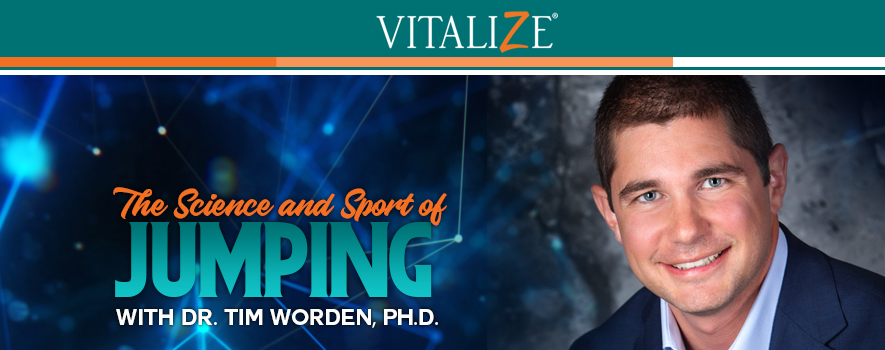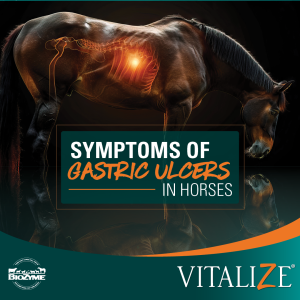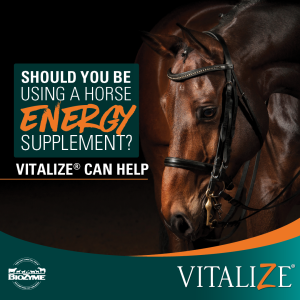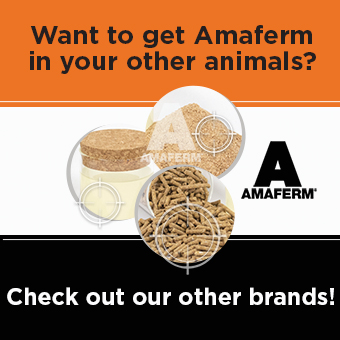Most people don’t combine the terms ‘sport’ and ‘science’ in the same conversation, but for Tim Worden, Ph.D., those two passions have led him to a unique role in the world of show jumping. Worden is a sports-scientist who has spent years studying the equine discipline of hunter-jumper, although it’s been years since he’s competed himself.
“My dad is a veterinarian, and around the age of 5, I started riding horses, with not much success for about 10 years,” Worden joked. “In high school, I started playing football and in university, I turned my interests to track and field as well as weightlifting.”
Worden completed his undergraduate degree in biomedical science. After four intense years of studying, he was ready for a break before pursuing his graduate work. He returned back to his roots and worked as a groom for a year at a hunter-jumper stable. With a fresh outlook, he was ready to pursue his master’s in biomechanics and neuroscience.
Obstacles and Opened Doors
Worden’s graduate work focused on obstacle avoidance and how humans move through the environment and process the information they need to step over obstacles. He explained that our sensory system must accurately ‘read’ an obstacle and transfer this information to muscles in order to move about them with caution, much like competition horses in show jumping.
“About that same time, I started talking to Canadian team rider Chris Sorensen about all the ways we could blend human sports training – weightlifting as well as track and field – combined with the information I had learned at university and apply it to the show jumping world. It was interesting research, we just had to make it applicable to horses,” Worden said. “Chris thought that was a cool idea, and he was gracious sharing his ideas as a coach and rider, and together we began experimenting with a few ideas.”
His conversations with Sorensen continued to open doors of opportunity for Worden. He spent a winter in Wellington, Fla., with Sorensen, where he had more time to study the equine athletes and their riders before his final round of studies and working toward a Ph.D. in biomechanics. He was well on his way to building valuable relationships in the equine industry, and eventually he became involved with the Canadian Equestrian Team.
”That opened up a lot of doors for me. There are a lot of similarities to how we train human athletes and I began applying that to the equestrian world, like heartbeat rate variability and measurement, monitoring what horses do in daily activities – intensity and length of activities, certain jumps that cause more faults, and so on. We found that each horse has his or her own peculiarities. For example, some horses need a certain amount of time to travel to competition; others seemingly aren’t affected much by travel,” Worden said of his comparisons.
Giving Back through Knowledge Translation
Since completing his doctoral studies, Worden has started a job at a hospital in Toronto, where he works in knowledge translation with a world-leading neurosurgeon and researcher to share research and make it accessible to the general public. However, prior to his full-time position, he formed another significant relationship in the equine business, this one with the Millar family of Millar Brooke Farm. He spent the winter as their barn manager and realized in addition to a shared passion of the sport, they also had a mutual interest in knowledge translation and sharing that information with others.
Working with 10-time Olympian Ian Miller along with the rest of his family, Amy, Jonathon and Kelly, Worden has been able to write articles and produce content on social media that help “coach” fellow jumpers so that they can better understand the sport and how their horses perform and compete. Through the Millars’ expertise and his ability to analyze and translate the science behind the sport, he is able to put it into simplified terms for the average person.
“The Millars are top-notch competitors who are willing to share their knowledge and information about their sport. They view it as a way to give back to the jumping community. Even though they are sharing knowledge, the people they are talking to have to listen and be willing to do the work to reap the rewards,” Worden said.
The years of his own competition as an athlete, combined with his studies of the human mind and body along with working with various horses and riders, have put Worden in his unique role today. He said working with the Millars has been especially rewarding because they have so much experience and through this knowledge, they have learned that it is best to give the horses opportunities, just like humans.
“Humans are the starting point for a lot of species because we have a significant amount of research and exposure into the physiology and mechanics of their neuromuscular function. While there are of course differences, it is easy to see many similarities across species,” Worden said. “I have been very lucky to have been able to watch the Millars train. They put the horse in the best possible position to succeed. They will guide a horse to the correct answer for whatever question they are asking – just like a track and field coach would.”
Keep the Horse Charged Up
Through his relationship with the Millar family, Worden also discovered a product that he is excited about, Vitalize® Alimend®, which he said helps buffer the stress of the equine athlete, and will give the rider some added peace of mind when entering the competition ring.
Competition horses are typically taken from their natural habitat, kept in stalls and given high-grain diets for energy, rather than turned out to graze during the day. All this adds some stress to the horse, and if not kept under control, this negative stress can cause digestive upset in the horse, and no rider wants to have to worry about their horse’s performance or health due to this. That is where a product like Alimend is so important.
“We can compare the human’s or horse’s body to a battery and all of these stressors, whether from competition, nutrition or lifestyle, can accumulate and cause it to lose some of its charge. To restore the charge, horses need proper recovery and, often, additional supplements to promote bodily functions. I think Alimend does a very good job of helping recharge the battery by balancing the pH in the gut, which aids digestion and helps eliminate gut disorders,” Worden said. “Without Alimend there to support the gut, the stressors that are chipping away a little of the energy at a time would eventually fully drain the battery, then you are getting digestive upset and other issues, and it is hard to charge back up.”
The body – human or equine – is a powerful thing, and the science behind the body is vast. It takes all parts functioning together to create a successful athlete, and it takes someone like Tim Worden to help athletes understand how the mind, skeletal structure and digestive system can function to overcome obstacles.



